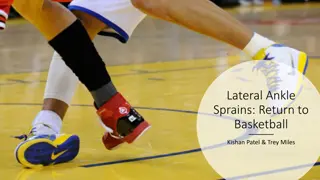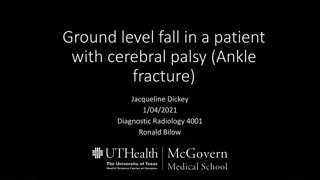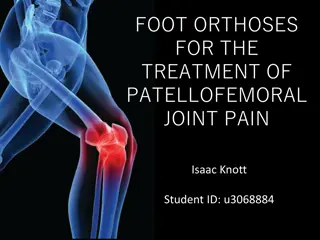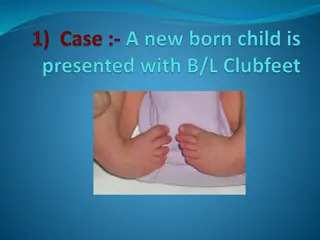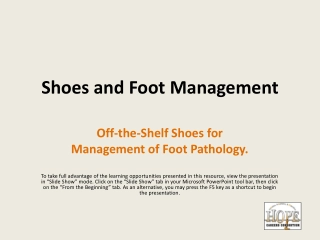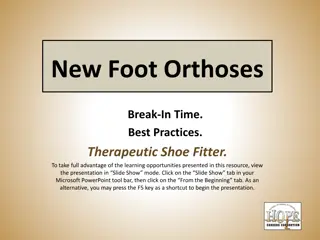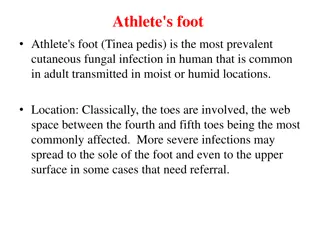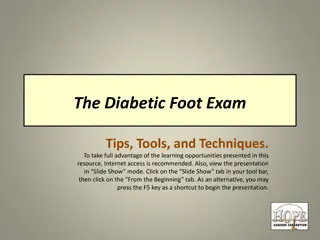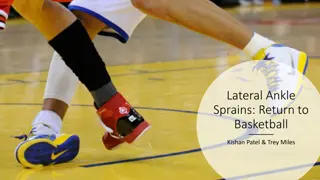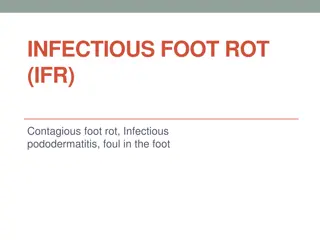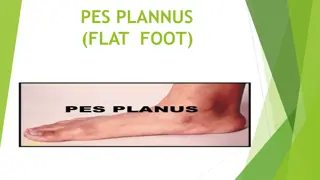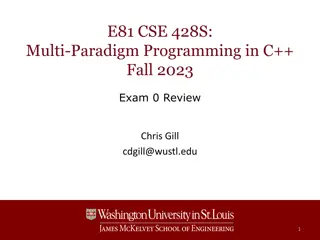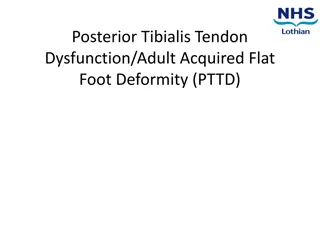Lower Extremity H&P: Foot/Ankle Exam Overview
The lower extremity H&P for foot/ankle examination in orthopedic curriculum involves various steps such as general ortho physical exam maneuvers, inspection for redness and deformities, palpation of specific areas for tenderness and fractures, range of motion assessment, muscle strength testing, and special tests like anterior drawer and Thompson test. It is crucial to consider the joints above and below the painful area. Images provided aid in visualizing the examination techniques and findings.
Download Presentation

Please find below an Image/Link to download the presentation.
The content on the website is provided AS IS for your information and personal use only. It may not be sold, licensed, or shared on other websites without obtaining consent from the author. Download presentation by click this link. If you encounter any issues during the download, it is possible that the publisher has removed the file from their server.
E N D
Presentation Transcript
Lower Extremity H&P: Foot/Ankle Exam WEEK 1 ORTHO CURRICULUM
General Ortho Physical Exam Maneuvers Inspection Palpation Range of Motion Muscle Strength Special Tests Always think about the joint above and below where the pain is and examine that joint
INSPECTION Look for redness, swelling, warmth -> think septic arthritis Evaluate for effusion Look for gross deformity
PALPATION Medial and lateral malleoli Palpate along the fibula to assess for tenderness, possible fibular fracture Anterior and posterior talofibular ligaments, deltoid ligament, calcaneofibular ligament Talar neck Calcaneus Mid-foot 5thmetatarsal Consider Jones fracture concern for avascular necrosis Palpate the mid-foot, assessing for Lisfranc fracture
RANGE OF MOTION Plantar flexion: 50 degrees Dorsiflexion: 20 degrees Foot inversion: 35 degrees Foot eversion: 25 degrees
STRENGTH TESTING Resisted plantar and dorsiflexion Resisted inversion and eversion
SPECIAL TESTS Anterior drawer Assesses the anterior talofibular ligament Have the patient sit with the knee flexed over the edge of the table Stabilize the distal lower extremity with one hand and apply an anterior force to the heel with the other hand, attempting to subluxate the talus anteriorly Talar tilt Evaluates for talar instability With the patient seated and with the ankle and foot unsupported in approx 15 degrees of plantar flexion, stabilize the medial aspect of the distal lower extremity and apply an inversion force to the hindfoot with the other hand Thompson test Evaluates for Achilles tendon rupture With the patient prone, flex the knee to 90 degrees and squeeze the calf The foot should plantar flex if it does not, suspect tendon injury Anterior drawer






